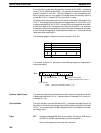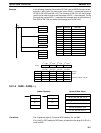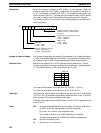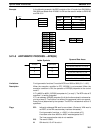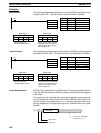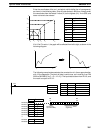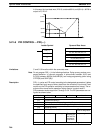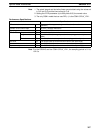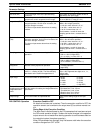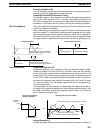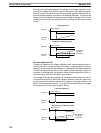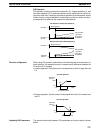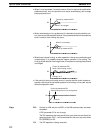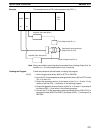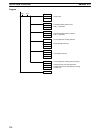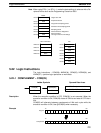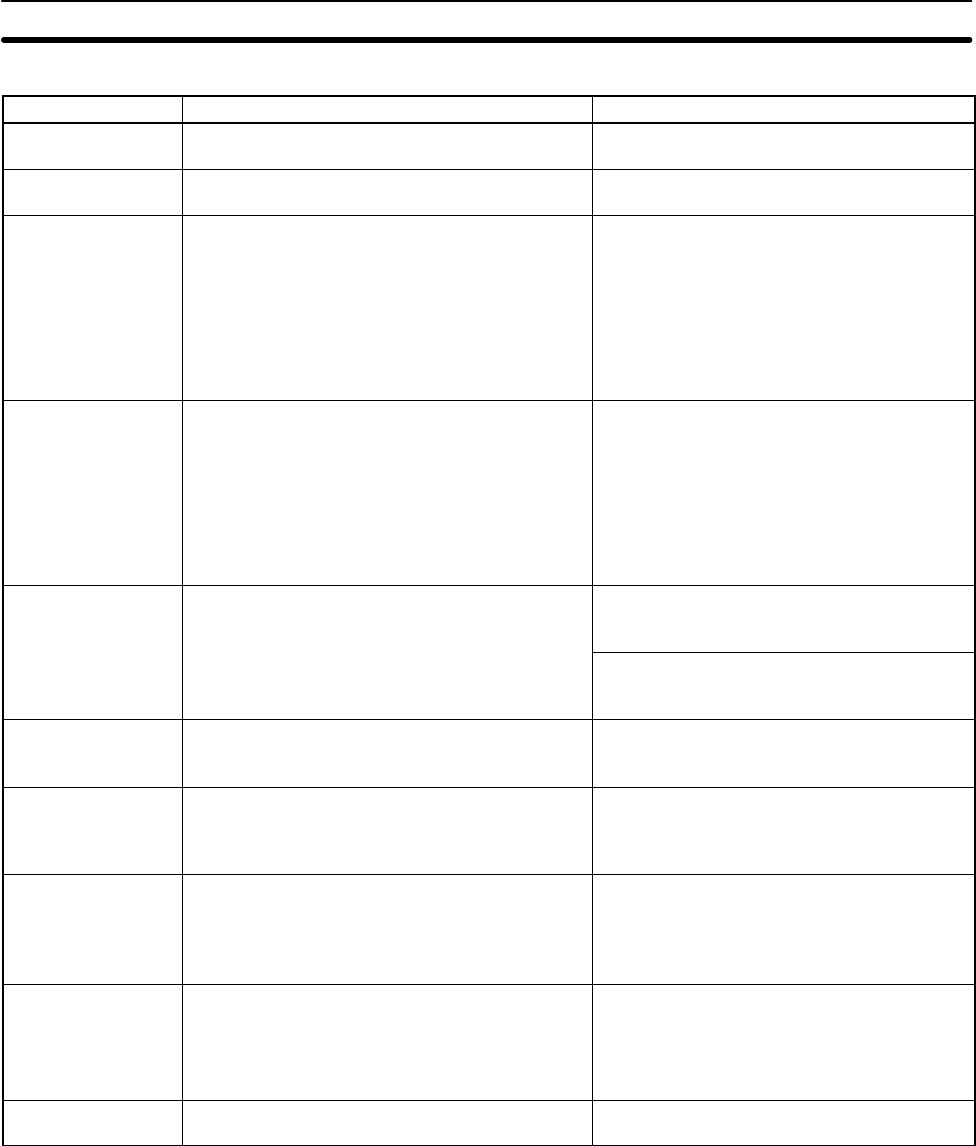
268
Parameter Settings
Item Contents Setting range
Set value (SV) This is the target value of the process being
controlled.
Binary data (of the same number of bits as
specified for the input range)
Proportional band This is the parameter for P control expressing the
proportional control range/total control range.
0001 to 9999 (4 digits BCD);
(0.1% to 999.9%, in units of 0.1%)
Integral time (Tik) This is a constant expressing the strength of the
integral operation. As this value increases, the
integral strength increases.
The time unit parameter determines the setting
method.
0001 to 8191 (4 digits BCD);
(9999 = No integral operation)
1× to 8191× when time unit = 0 or 1
0.1 to 819.1 s when time unit = 8
0.1 to 81.9 s when time unit = 9
Set to between 1 and 8191 times the
sampling period when a constant time is
used.
Derivative time
(Tdk)
This is a constant expressing the strength of the
derivative operation. As this value increases, the
derivative strength increases.
The time unit parameter determines the setting
method.
0001 to 8191 (4 digits BCD);
(0000 = No derivative operation)
1× to 8191× when time unit = 0 or 1
0.1 to 819.1 s when time unit = 8
0.1 to 81.9 s when time unit = 9
Set to between 1 and 8191 times the
sampling period when a constant time is
used.
Sampling period This sets the period for executing the PID
operation.
C200HX/HG/HE, CQM1-CPU4j-EV1:
0001 to 1023 (4 digits BCD);
(0.1 to 102.3 s, in units of 0.1 s)
C200HX/HG/HE only:
0001 to 9999 (4 digits BCD);
(0.01 to 99.99 s, in units of 0.01 s)
PID forward/reverse
designation
This is the parameter that determines the
direction of the proportional operation.
0: Reverse operation
1: Forward operation
(1 digit BCD)
2-PID parameter (α) This is the input filter coefficient. Normally use
0.65 (i.e., a setting of 000). The filter efficiency
decreases as the coefficient approaches 0.
000: α = 0.65
100 to 199: Rightmost two digits are α, i.e.,
0.00 to 0.99.
(3 digits BCD)
Input range This is the number of input data bits. 0: 8 bits
1: 9 bits
2: 10 bits
3: 11 bits
4: 12 bits
5: 13 bits
6: 14 bits
7: 15 bits
8: 16 bits
(1 digit BCD)
Time unit for
sampling period and
integral/derivative
times
Specifies the time unit for the sampling period
and the method for setting the integral/derivative
parameters.
0, 1, 8, or 9 (1 digit BCD)
0: Constant time, Unit: 100 ms
1: Constant time, Unit: 10 ms
8: Relative time, Unit: 100 ms
9: Relative time, Unit: 10 ms
Output range This is the number of output data bits. Same as the setting range for the input
range.
PID CONTROL Operation Execution Condition OFF
All data that has been set is retained. Then the execution condition is OFF, the
operation amount can be written to the output word (D) to achieve manual con-
trol.
Rising Edge of the Execution Condition
The work area is initialized based on the PID parameters that have been set and
the PID control operation is begin. Sudden and radical changes in the operation
output amount are not made when starting operation to avoid adverse affect on
the controlled system (bumpless operation).
When PID parameters are changed, they first become valid when the execution
condition changes from OFF to ON.
Special Math Instructions Section 5-21



